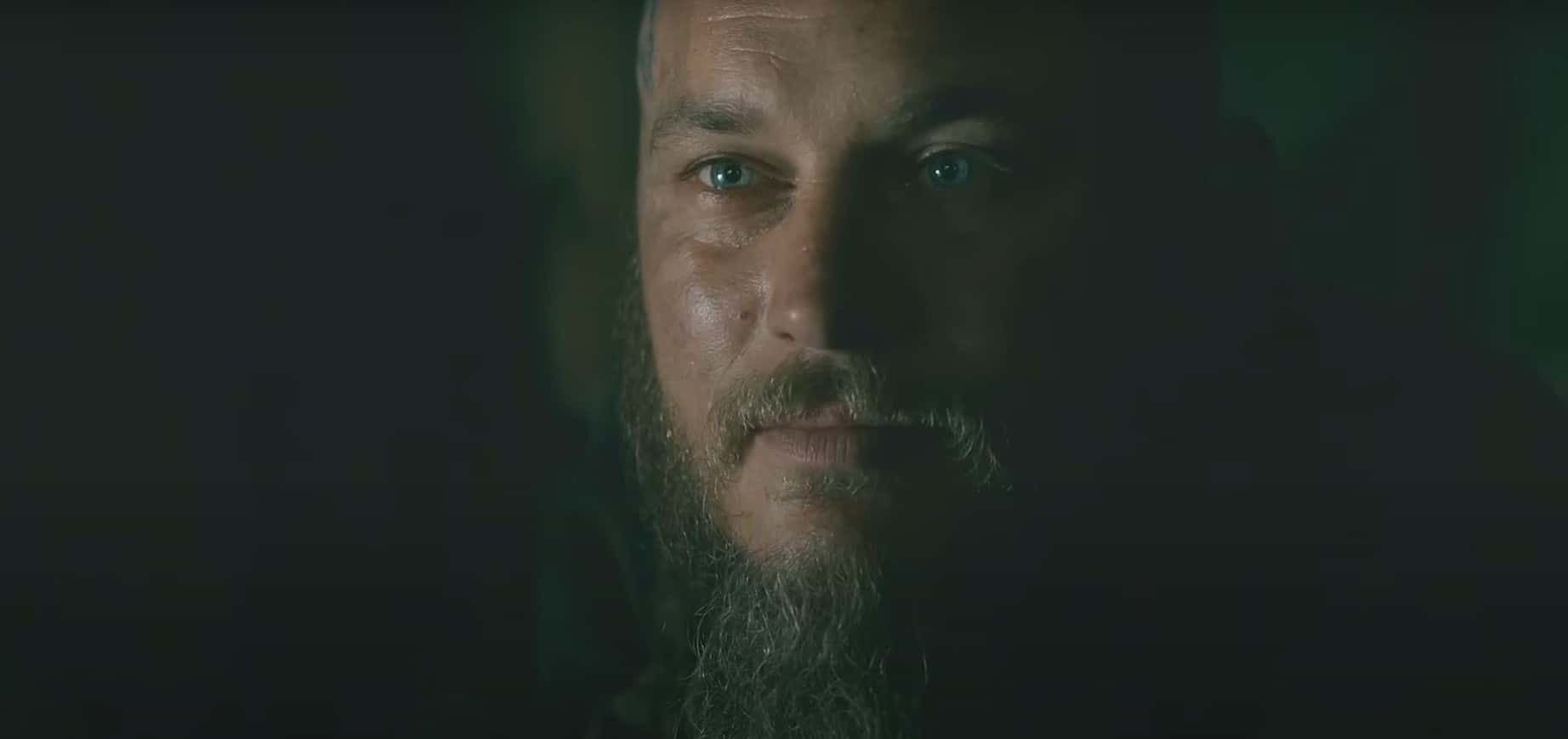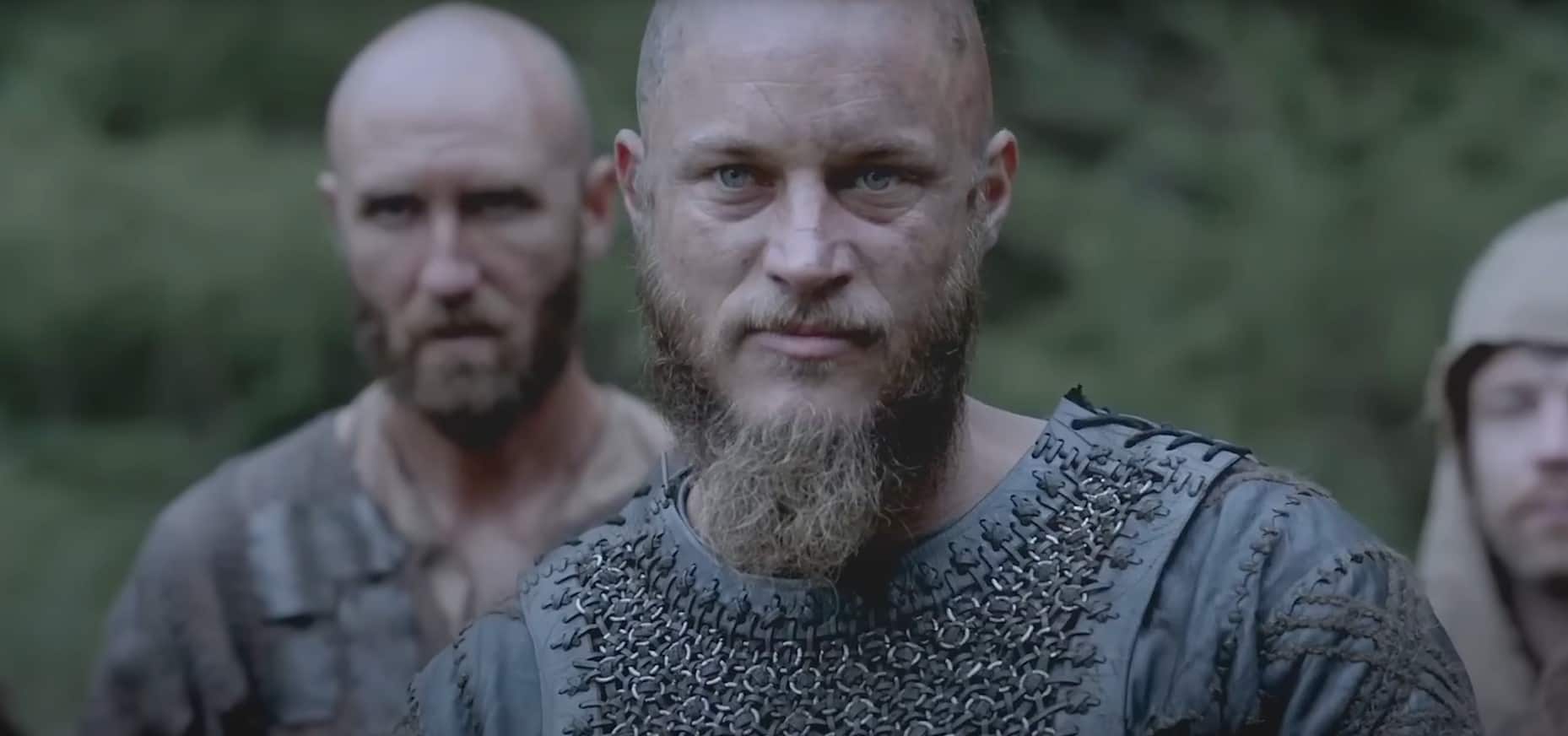History Channel’s period drama series Vikings rose to fame for the way in which it portrayed the men from Scandivania, the famous Vikings, and one in particular, Ragnar Lothbrok, a historical character whose actions immortalized him in Scandinavian literature as he managed to conquer and expand his kingdom.
Played on the series by Travis Fimmel, Ragnar starts out as your typical Viking, fighting here and there, only to grow to become a leading figure in his community and eventually meet a demise that left many viewers shocked as the series killed off the main character all of a sudden.
If you’re watching Vikings and are wondering what became of Ragnar’s destiny, his trajectory, and what led to his death in the series, this article will explore all that. We’ll share with you some details concerning the plot with some spoilers, and we’re going to tell you a few historical trivia facts about the character that inspired the story you see in History’s popular show.

The Journey To Ragnar Lothbrok’s Demise
Before we cover how Ragnar dies, we must give you some context, as the main character from the series simply didn’t die out of the blue because of some error in judgment during his character development arc no. There are several critical moments that eventually contribute to Ragnar’s death.
Rollo And France Broke Ragnar’s Temper
We must start by mentioning Rollo’s defection to West Francia. You see, Rollo, who was once Ragnar’s loyal and trusted brother, becomes his biggest obstacle when he chooses to change allegiances and side with the enemy. An action that drastically alters the balance of power and the dynamics between Ragnar’s leadership and his relationship with Rollo.
After Ragnar’s attempts to attack Rollo’s position and is defeated, he experiences a profound transformation, further shaping the trajectory of his life. The experiences and emotional turmoil that Ragnar endures during his time in Paris directly influence his choices, which eventually culminate in his return to Scandinavia.
Ragnar Returns A Broken Man
Upon returning to Scandinavia, Ragnar feels alienated from his home, and he chooses to isolate himself in a self-loathing spiral for several years. However, after many years, he decided to go back to Kattegat and decides to embark on a journey toward England, one journey that he never returned back from.

What Episode Does Ragnar Die In Vikings?
This leads us to the main question, when does Ragnar die? Well, Ragnar dies in season 4, in the episode titled “All His Angels”. After Ragnar goes back to Kattegat and realizes that his fate is inextricably tied to what’s happening all around him, Ragnar embarks for England. He lands in Wessex and surrenders himself to King Ecbert, who, in turn, delivers Ragnar to King Ælle.
Why does King Ecbert give up Ragnar? Because he knows that Ælle had a longstanding beef with Ragnar and wants payback. As it turns out, Ragnar suffers unspeakable torture and humiliation and is thrown into a pit of snakes, where he dies. And that shocked viewers back in its time as it was a pivotal moment in the series, and shows like that don’t kill off the main character for anything.
Also Read: Vikings Review: Is It Worth A Watch?
The Meaning Of Ragnar Dying In Vikings
Ragnar’s death is not just a sad thing that happens in the series; it also sets up future plots, character arcs, and how his sons change over time. Ragnar is passing the torch to the next generation by telling Ivar about his plans for revenge. The next generation will carry on his legacy and try to reach his ultimate goals. Ragnar’s sons, especially Ivar the Boneless and Bjorn Ragnar Lothbrok, died soon after their father. This marked the end of an era in the Viking world.
Was Ragnar Lothbrok A Real Historic Character?
While Ragnar Lothbrok’s adventures in History Channel’s Vikings are exciting and amazing, his story is partially inspired by real events. To add some emotion to the story, scriptwriters bent the rules and made up a few things about the character we see on screen.
While a real Scandinavian historical figure with the same name might have existed, we can trace very little to historical facts concerning what he did. His name does pop up in Norse poems, sagas, and stories, but that’s about it when it comes to Viking’s historical accuracy in portraying the story.
Also Read: 45 Best Drama Series Like Vikings: For Fans of TV series



